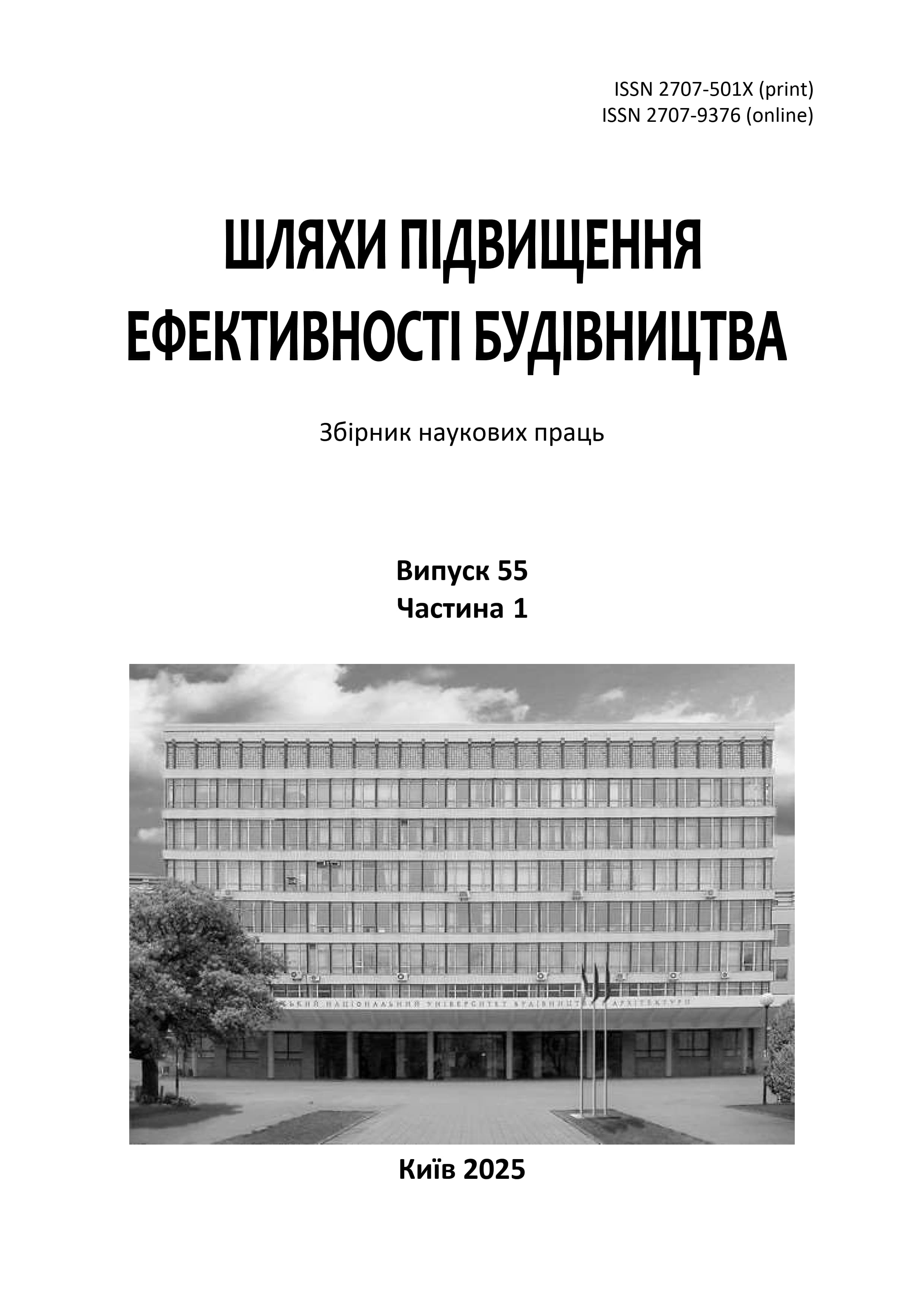Analytical mechanisms for determining key investment priorities in the construction sector
DOI:
https://doi.org/10.32347/2707-501x.2025.55(1).230-245Keywords:
investment priorities, construction sector, multi-criteria analysis, efficiency, forecasting, monitoring, model, artificial intelligence, financial instruments, optimization, big data, government regulation, productivity, risk management, sustainable developmentAbstract
This article explores the analytical mechanisms used to determine key investment priorities in the construction sector. Given the growing challenges in urbanization, environmental sustainability, and digital transformation, effective management of investment resources has become a critical task. The study analyzes modern approaches to evaluating investment projects, including multi-criteria analysis methods, economic-mathematical modeling, and forecasting.
Special attention is given to the application of artificial intelligence, big data, and geoinformation systems in investment decision-making processes. The use of these technologies enhances forecast accuracy, reduces investment risks, and optimizes financial flow management. Additionally, the study examines risk factors, including macroeconomic fluctuations, volatility in the construction materials market, and changes in regulatory frameworks.
The article also reviews methods for assessing investment efficiency, particularly discounted cash flow (DCF), net present value (NPV) analysis, internal rate of return (IRR), and other financial instruments that help determine the feasibility of investments in construction projects. A separate section is dedicated to analyzing environmental and social criteria for investment evaluation, which are crucial in the context of sustainable development.
The role of government regulation, financial instruments, and investment support programs in the construction sector is also considered. A conceptual model for evaluating investment priority areas is proposed, integrating economic, social, and environmental factors.
The research findings may be useful for government agencies, investors, and construction sector companies in developing growth strategies and effectively allocating financial resources. The application of the proposed methods will enhance the competitiveness of the construction industry, ensure real estate market stability, and facilitate the implementation of innovative solutions in construction processes.
The proposed approach to determining investment priorities enables a comprehensive assessment of project potential, considering financial, technological, environmental, and market factors. This contributes to the efficient use of capital, risk minimization, and overall improvement in the effectiveness of the construction sector.
References
Chernyshev, D., Ryzhakova, G., Honcharenko, T., Petrenko, H., Chupryna, I., Reznik, N. (2023). Digital Administration of the Project Based on the Concept of Smart Construction. In: Alareeni, B., Hamdan, A. (eds) Explore Business, Technology Opportunities and Challenges After the Covid-19 Pandemic. ICBT 2022. Lecture Notes in Networks and Systems, vol 495. Springer, Cham.
McCaffrey, J. D. Test Run: Analytical Hierarchy Process. MSDN Magazine, 2005.
Beritiella, M., Della Valle, S., Endina, A. Analytical Hierarchy Process for Evaluating Transport Policies to Reduce Climate Change Impact. Eni Enrico Mattei Foundation, 2007.
Bodin, L., Gass, S. I. Exercises for teaching the analytic hierarchy process. INFORMS Transactions on Education, 2003. Vol. 3, No. 2. P. 1–9.
Drake P. R. Using the analytic hierarchy process in engineering education. – International Journal of Engineering Education, 1998. Vol. 14, No. 3. P. 191–196.
Forman E. H., Selly A. Decision-making with multiple criteria: The analytic hierarchy approach. Pittsburgh: RWS Publications, 2001. 478 p.
Saati T. L. Fundamentals of decision-making and priority theory with the analytic hierarchy process. Pittsburgh: RWS Publications, 2000. 478 p..
Чуприна Ю.А. Залучення прикладних переваг bim-технологій до методики і практики формування життєвого циклу проектів в складі державних цільових програм, які втілюються будівельним кластером. Економіка та держава. 2019. № 2. DOI: 10.32702/2306-6806.2019.3.67
Bushan N., Rai K. Strategic decision-making: Application of the analytical hierarchy process. London: Springer-Verlag, 2004. 175 p.
Vargas L. G. Decision analysis in economic, social and technological environments: Analytical hierarchy process. Pittsburgh: RWS Publications, 1994. 352 p.
Sarrachoglu B. O. Selection of industrial investment locations in the master plans of countries. European Journal of Industrial Engineering, 2013. Vol. 7, No. 3. P. 317–340.
Day P. K. Risk analysis of interstate oil pipelines in India using the analytical hierarchy process. Journal of Natural Hazards, 2003. Vol. 29, No. 3. P. 251–270.
Attirawong V., McCarthy B. Selecting the location of offshore manufacturing facilities: An application of the analytical hierarchy process. Proceedings of the 7th International Symposium on Manufacturing, Cambridge, 2002.
Grandzol, J. (2006). Improving the Faculty Selection Process in Higher Education: A Case for the Analytic Hierarchy Process. IR Applications. Volume 6. Association for Institutional Research.
Downloads
Published
How to Cite
Issue
Section
License

This work is licensed under a Creative Commons Attribution 4.0 International License.
Authors who publish with this journal agree to the following terms:
- Authors retain copyright and grant the journal right of first publication with the work simultaneously licensed under a Creative Commons Attribution License that allows others to share the work with an acknowledgement of the work's authorship and initial publication in this journal.
- Authors are able to enter into separate, additional contractual arrangements for the non-exclusive distribution of the journal's published version of the work (e.g., post it to an institutional repository or publish it in a book), with an acknowledgement of its initial publication in this journal.
- Authors are permitted and encouraged to post their work online (e.g., in institutional repositories or on their website) prior to and during the submission process, as it can lead to productive exchanges, as well as earlier and greater citation of published work (See The Effect of Open Access).

